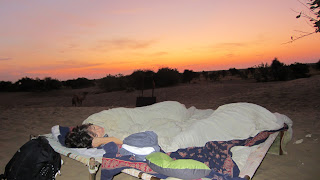We have found paradise in the south and are now relaxing in Kerala where the pace is much slower. This is at the same latitude as Panama so hot and tropical. We spent 3 days in Fort Kochi, a town that is steeped in history.Vasco de Gama landed and died here, and the Portuguese traded for many years before the arrival of Dutch and then English traders. There are churches and forts as well as other reminders of the colonial past of this fascinating town.
This part of India is in fact the seat of Catholicism in India, with Syrian Catholics (brought here by doubting Thomas) and Roman Catholics who had an important role in developing an excellent educational system under the Jesuit missionaries. And of course there is a dwindling Jewish community with about 9 families left and the oldest synagogue in India and the British empire. It has been a bit of a welcome change to visit historical sites that relate to a religious past and present more familiar to us than Hinduism, Buddhism and Jainism.
We soaked up some culture by attending a Kathakali performance...you have to see and hear it to believe this art form. It is basically a dance and music performance based on old Hindu texts (the Mahabharata). The artists use hand and facial expressions while the story is sung by a narrator. Their makeup takes hours to apply. They meditate prior to performing in order to fully enter their roles. Costumes are fantastic.
Lord Krishna telling Bhima that he did not sin by killing the enemy
And then to continue our cultural experience we attended a concert of classical music from Northern India. This was sitar and tabla, and truly something new for us. The sitar has a haunting sound, mindful of Ravi Shankar and the music we first heard via George Harrison and the Beatles.
Tabla and sitar musicians at the Kerala Katakhali Cultural Center
This photo is of the Chinese fishing nets that are used in Fort Kochi to catch fish which are then sold fresh on the board walk. It is amazing to see the men lower and raise the huge nets at high tide. The ropes are all weighted with huge rocks. It takes about 6 men to pull up the nets attached to these heavy weights. It has been good to eat fresh fish for the last few days, cooked in Kerala style...different from the usual Indian cuisine.
Chinese fishing nets at Fort Cochi
Tomorrow we trek into Periyar wildlife reserve, in the hopes to see wild elephants and if lucky (very lucky), tigers. From our treetop hotel room we can see many birds, water buffalo, mongoose, wild pigs, and deer.This is beautiful country.
This part of India is in fact the seat of Catholicism in India, with Syrian Catholics (brought here by doubting Thomas) and Roman Catholics who had an important role in developing an excellent educational system under the Jesuit missionaries. And of course there is a dwindling Jewish community with about 9 families left and the oldest synagogue in India and the British empire. It has been a bit of a welcome change to visit historical sites that relate to a religious past and present more familiar to us than Hinduism, Buddhism and Jainism.
We soaked up some culture by attending a Kathakali performance...you have to see and hear it to believe this art form. It is basically a dance and music performance based on old Hindu texts (the Mahabharata). The artists use hand and facial expressions while the story is sung by a narrator. Their makeup takes hours to apply. They meditate prior to performing in order to fully enter their roles. Costumes are fantastic.
Lord Krishna telling Bhima that he did not sin by killing the enemy
And then to continue our cultural experience we attended a concert of classical music from Northern India. This was sitar and tabla, and truly something new for us. The sitar has a haunting sound, mindful of Ravi Shankar and the music we first heard via George Harrison and the Beatles.
Tabla and sitar musicians at the Kerala Katakhali Cultural Center
This photo is of the Chinese fishing nets that are used in Fort Kochi to catch fish which are then sold fresh on the board walk. It is amazing to see the men lower and raise the huge nets at high tide. The ropes are all weighted with huge rocks. It takes about 6 men to pull up the nets attached to these heavy weights. It has been good to eat fresh fish for the last few days, cooked in Kerala style...different from the usual Indian cuisine.
Chinese fishing nets at Fort Cochi
Tomorrow we trek into Periyar wildlife reserve, in the hopes to see wild elephants and if lucky (very lucky), tigers. From our treetop hotel room we can see many birds, water buffalo, mongoose, wild pigs, and deer.This is beautiful country.
























